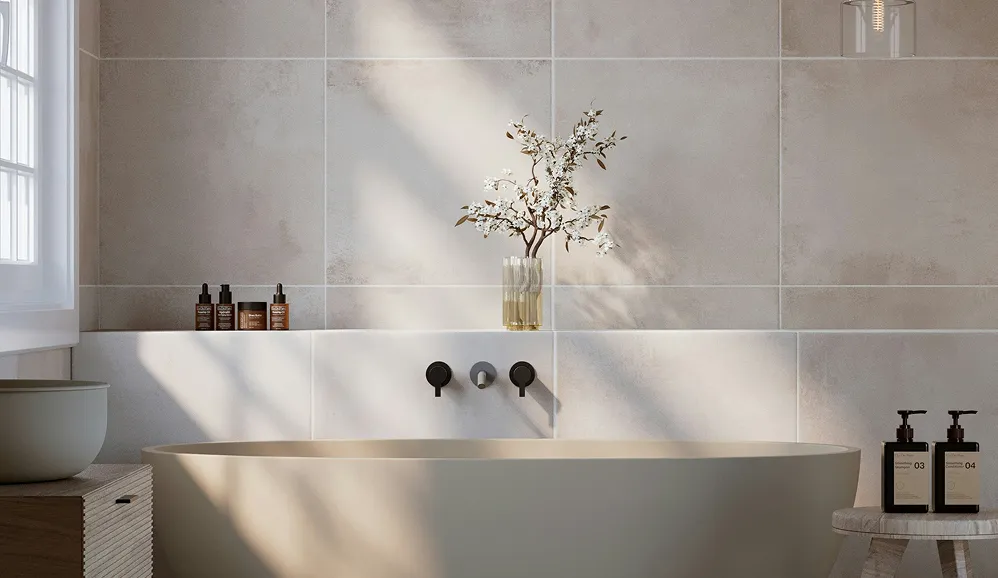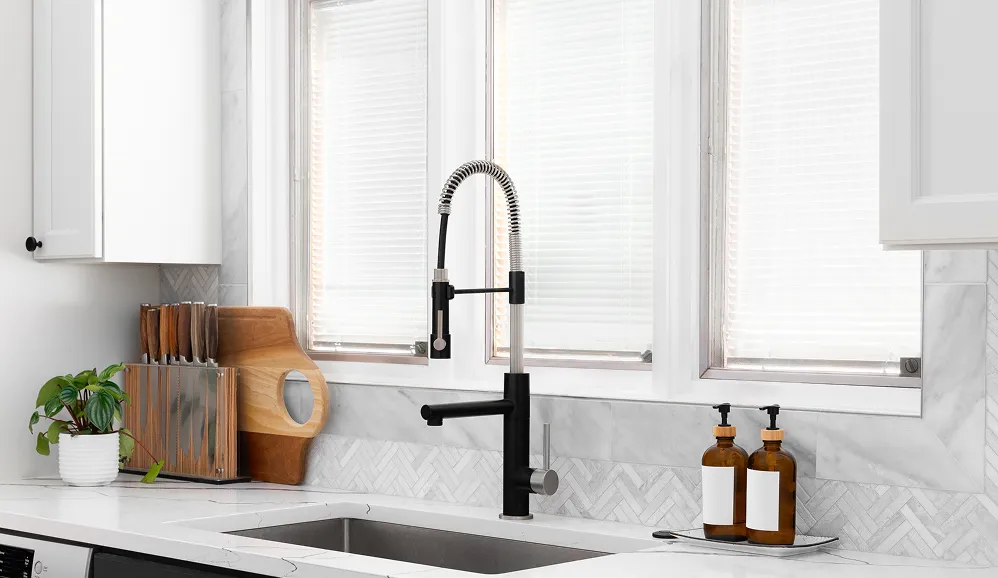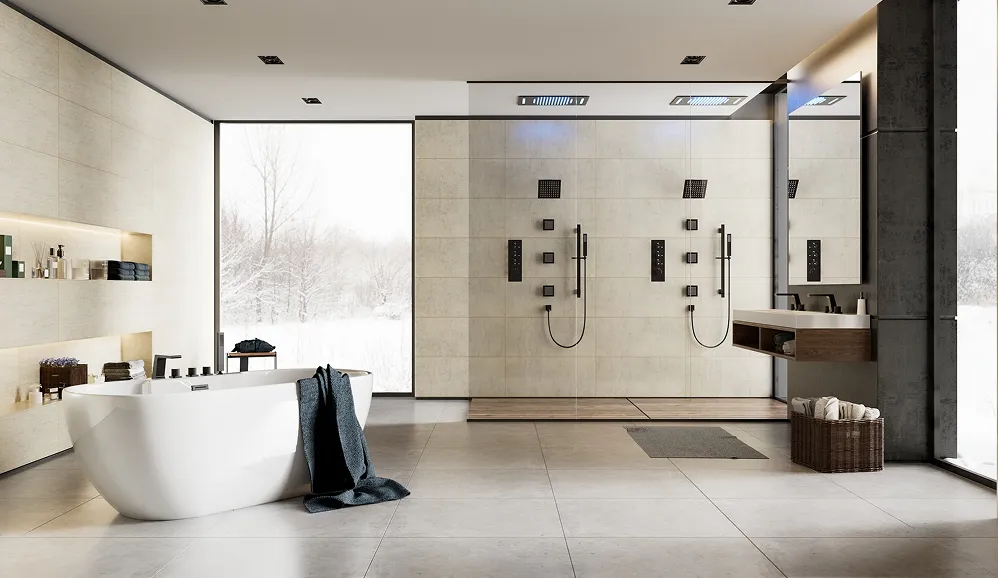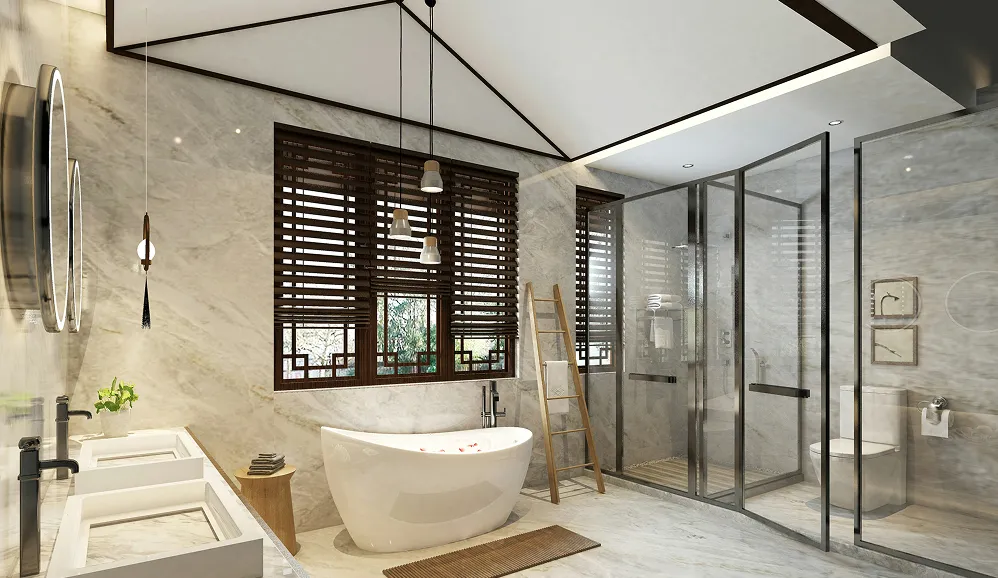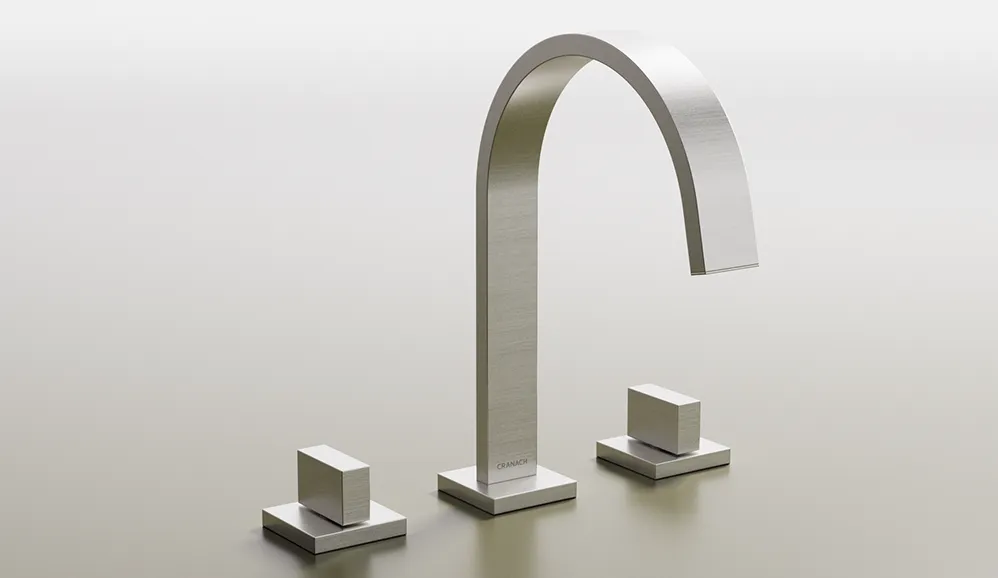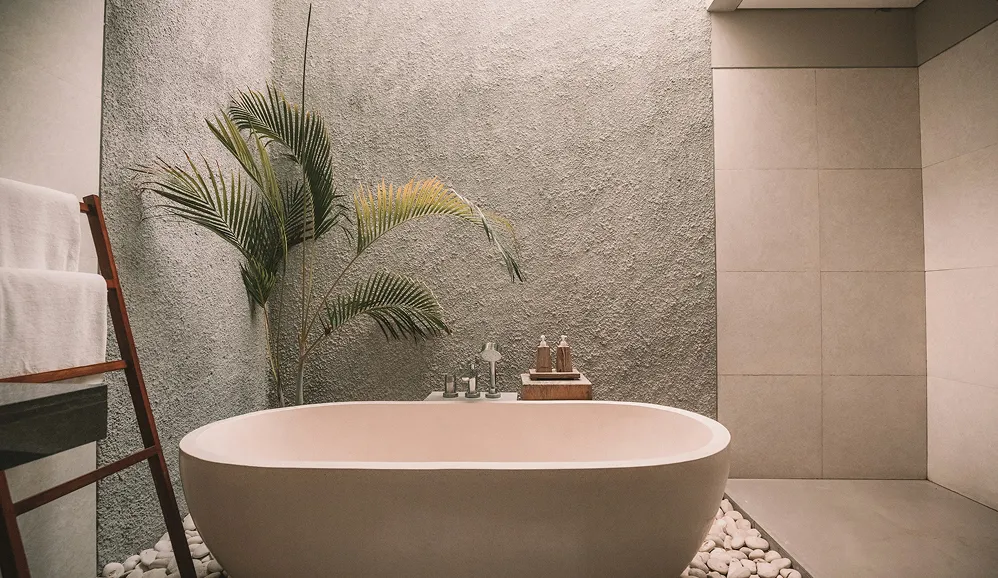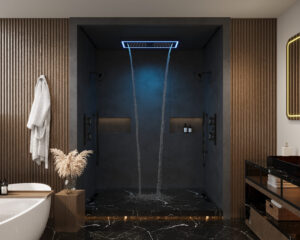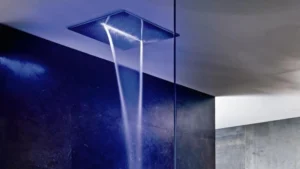Navigating Kitchen Faucet Styles: Finding Your Perfect Match
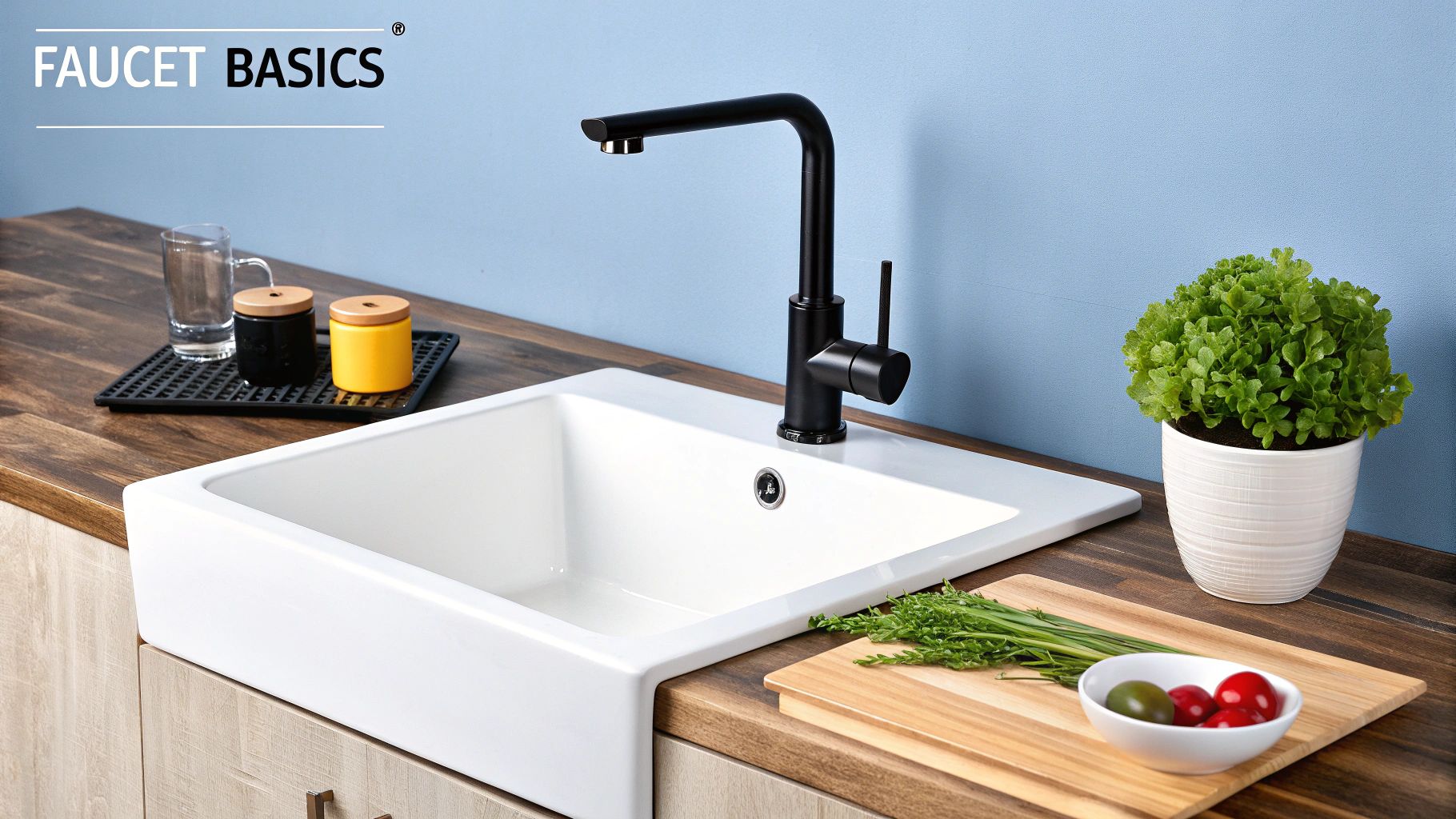
Choosing the right kitchen faucet is a crucial decision. It’s more than just a fixture; it’s a key component of your kitchen’s functionality and style. The perfect faucet blends seamlessly with your workflow and enhances your overall cooking experience. From modern minimalist designs to timeless traditional aesthetics, the right faucet can elevate your kitchen. The global kitchen faucets market, valued at USD 6 billion in 2022, underscores the significance of this choice. Growth in this market is driven by factors like urbanization, home renovations, and a growing emphasis on water conservation.
Understanding the Core Styles
Each faucet style offers its own set of advantages and disadvantages. These can impact everything from how easily you use the faucet to how efficiently you clean up. Let’s explore some of the most popular options.
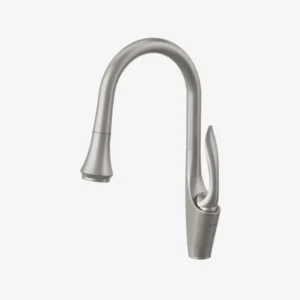 Single-Handle Faucets: These faucets offer a sleek, contemporary look and streamlined control. With just one lever, you can adjust both temperature and water flow, making them ideal for busy kitchens.
Single-Handle Faucets: These faucets offer a sleek, contemporary look and streamlined control. With just one lever, you can adjust both temperature and water flow, making them ideal for busy kitchens.
 Double-Handle Faucets: A more traditional or classic choice, double-handle faucets offer separate controls for hot and cold water. This allows for precise temperature adjustments, giving you greater control over your water temperature.
Double-Handle Faucets: A more traditional or classic choice, double-handle faucets offer separate controls for hot and cold water. This allows for precise temperature adjustments, giving you greater control over your water temperature.
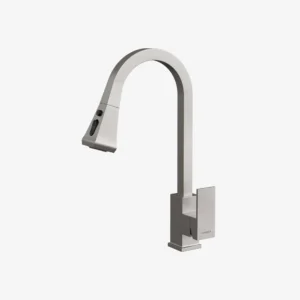 Pull-Down Faucets: These versatile faucets feature a retractable spout that neatly docks when not in use. The pull-down feature offers various spray options, making rinsing dishes and filling pots much easier.
Pull-Down Faucets: These versatile faucets feature a retractable spout that neatly docks when not in use. The pull-down feature offers various spray options, making rinsing dishes and filling pots much easier.
 Pull-Out Faucets: Similar to pull-down models, pull-out faucets have a spray head that extends from the spout. This design provides added flexibility for cleaning and reaching those awkward corners of your sink. However, they generally have a shorter reach than pull-down faucets.
Pull-Out Faucets: Similar to pull-down models, pull-out faucets have a spray head that extends from the spout. This design provides added flexibility for cleaning and reaching those awkward corners of your sink. However, they generally have a shorter reach than pull-down faucets.
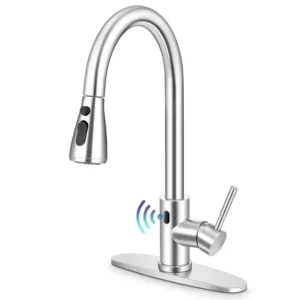 Touchless Faucets: These high-tech faucets activate with a simple hand motion, minimizing the spread of germs and simplifying cleanup. This hands-free operation is especially convenient when your hands are full or messy.
Touchless Faucets: These high-tech faucets activate with a simple hand motion, minimizing the spread of germs and simplifying cleanup. This hands-free operation is especially convenient when your hands are full or messy.
To help you compare the different faucet types, we’ve compiled the following table:
Kitchen Faucet Types Comparison
| Faucet Type | Key Features | Best For | Price Range | Maintenance Level |
|---|---|---|---|---|
| Single-Handle | Single lever for temperature and flow control | Busy kitchens, modern designs | $50 – $300 | Low |
| Double-Handle | Separate hot and cold water controls | Traditional kitchens, precise temperature control | $50 – $400 | Low |
| Pull-Down | Retractable spout with spray options | Families, frequent cooks | $100 – $500 | Moderate |
| Pull-Out | Extendable spray head | Smaller sinks, targeted cleaning | $80 – $400 | Moderate |
| Touchless | Hands-free activation | Germ-conscious households, ease of use | $200 – $800 | Moderate |
This table provides a quick overview of the key features, ideal uses, price ranges, and maintenance levels of each faucet type. Considering these factors will help you choose the best faucet for your needs.
Matching Style to Functionality
Finding the right faucet involves carefully considering your specific needs and how you use your kitchen. If you’re a passionate home chef who frequently fills large pots, a pull-down faucet might be a great choice. If you have a busy family constantly in and out of the kitchen, a touchless faucet might be the perfect solution.
Considering Mounting Styles
Beyond the basic faucet styles, understanding mounting options is essential for a smooth installation process and a cohesive look.
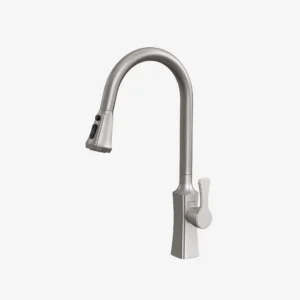 Deck-Mount Faucets: The most common type, deck-mount faucets are installed directly onto the sink deck or countertop. This mounting style makes installation and replacement relatively straightforward.
Deck-Mount Faucets: The most common type, deck-mount faucets are installed directly onto the sink deck or countertop. This mounting style makes installation and replacement relatively straightforward.
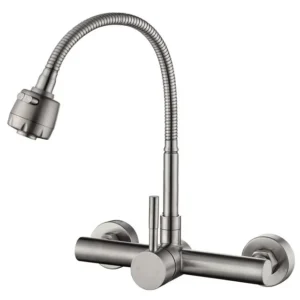 Wall-Mount Faucets: For a clean, minimalist look and extra counter space, consider a wall-mount faucet. Keep in mind that these require more complex plumbing.
Wall-Mount Faucets: For a clean, minimalist look and extra counter space, consider a wall-mount faucet. Keep in mind that these require more complex plumbing.
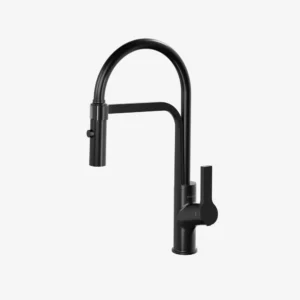 Single-Hole Faucets: As the name suggests, these faucets require only one hole for installation, making them a popular choice for modern sinks and contributing to a sleek, uncluttered aesthetic.
Single-Hole Faucets: As the name suggests, these faucets require only one hole for installation, making them a popular choice for modern sinks and contributing to a sleek, uncluttered aesthetic.
Choosing the right faucet involves finding a balance between aesthetics and functionality. Consider your personal style, daily routines, and the specific features that will truly enhance your kitchen experience. A well-chosen faucet will not only look beautiful but also improve your kitchen’s functionality for years to come.
Materials Matter: Choosing Finishes That Actually Last
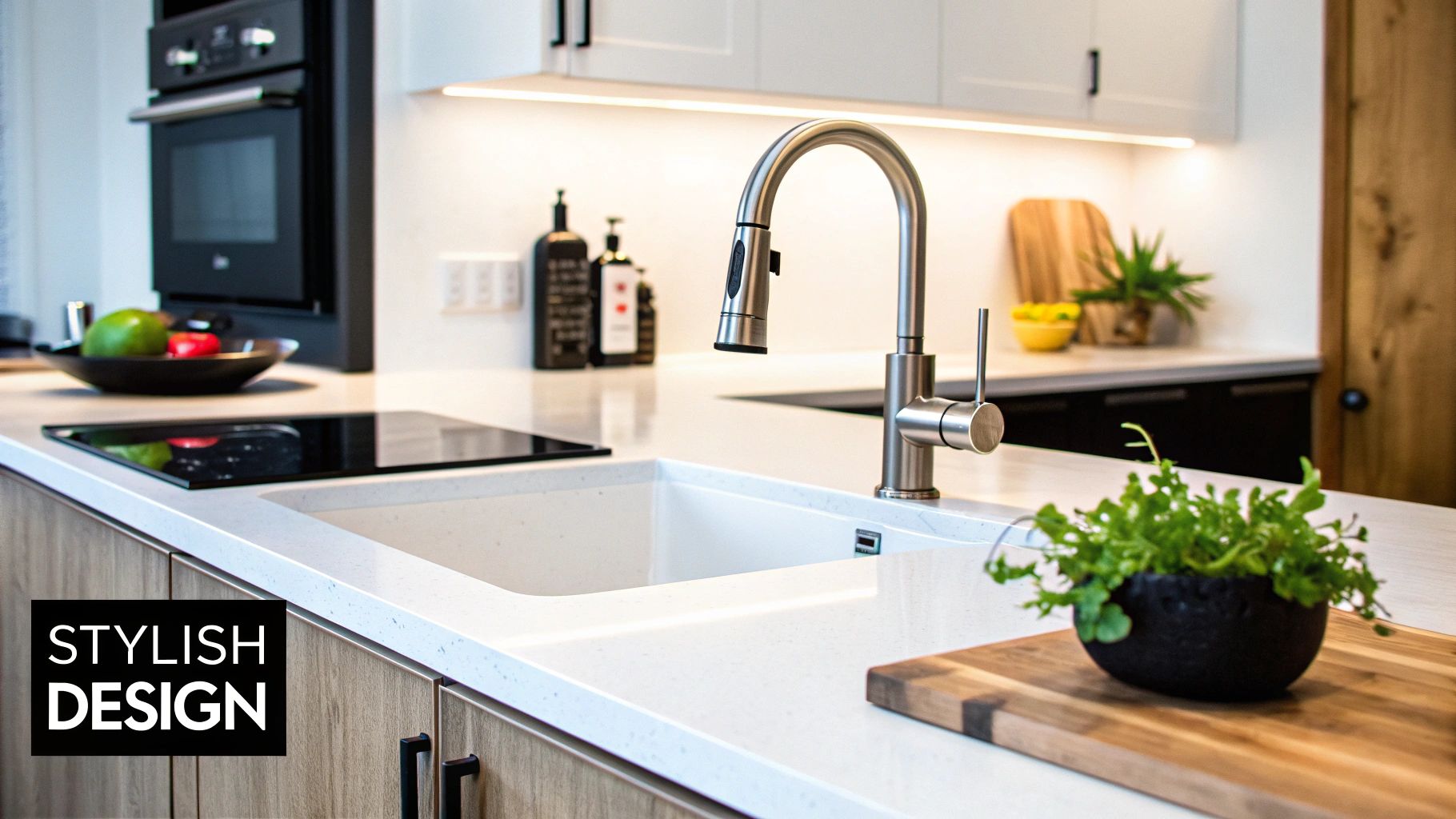
That beautiful new kitchen faucet can quickly become a major headache if the finish doesn’t stand up to daily wear and tear. Choosing the right faucet goes beyond just looks. The materials and finish have a big impact on how long it lasts and how much work it takes to keep it looking its best. Understanding the properties of different materials is key to making a smart choice.
Decoding Durable Materials
A faucet’s true strength lies in the materials it’s made of, not just its initial shine. Brass is a popular choice thanks to its durability and resistance to corrosion, making it a solid long-term investment. Stainless steel is another great option, offering excellent resistance to rust and stains, which contributes to its enduring popularity.
Zinc alloys are a more budget-friendly alternative, but they may be more susceptible to wear and tear over time. Composite materials also offer a lightweight and cost-effective solution, but they might not have the same lifespan as brass or stainless steel.
Finishes That Stand the Test of Time
The finish you select affects not only the faucet’s appearance but also its ability to resist scratches, water spots, and daily wear.
- Chrome: This classic finish offers a bright, reflective surface and is relatively easy to clean. Keep in mind that chrome can show fingerprints and water spots more readily.
- Brushed Nickel: With a softer, warmer tone, brushed nickel excels at hiding fingerprints and smudges. Its durability makes it a favorite for busy kitchens.
- Matte Black: A trendy choice, matte black delivers a dramatic, modern look. It does, however, require more regular cleaning to prevent water spots and maintain its sleek appearance.
- Bronze: This finish brings a touch of elegance and warmth to any kitchen. Oil-rubbed bronze, in particular, develops a beautiful patina over time, adding to its character. For more information, check out our guide to faucet finishes.
Making the Right Choice
The perfect combination of material and finish is crucial. This ensures your faucet remains a beautiful and functional part of your kitchen for years to come. Consider your lifestyle, cleaning habits, and overall kitchen design when making your selection. A durable material combined with a resilient finish provides both lasting beauty and top performance. While all finishes require some care, understanding their individual properties helps you find the perfect fit for your needs.
Beyond Basics: Features That Transform Your Kitchen Experience
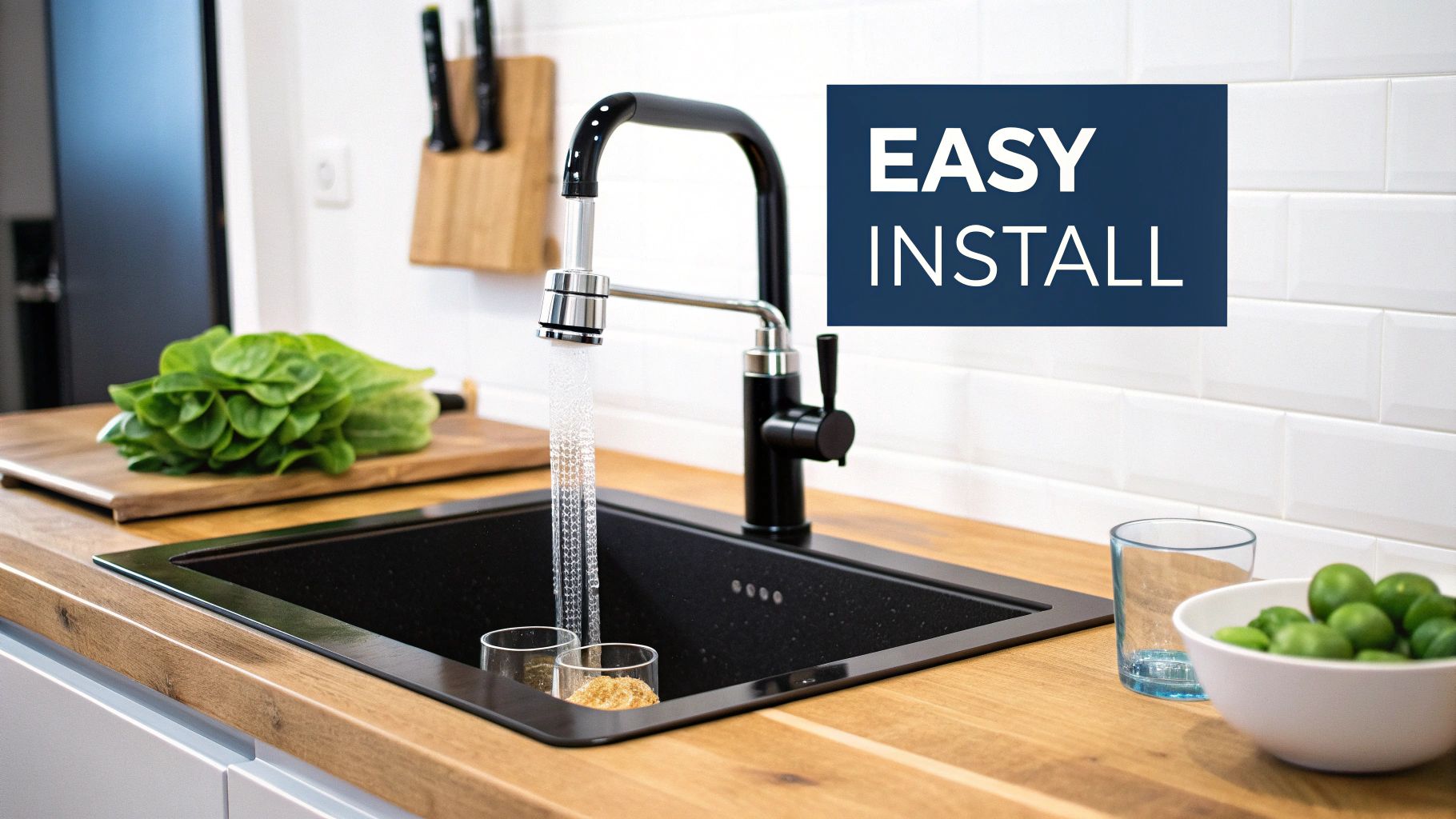
So, you’ve picked your faucet style and a durable finish. Great! Now, let’s explore the extra features that can truly elevate your kitchen experience. These seemingly small details can make a world of difference in your daily routine, from meal prepping to cleaning up.
Spray Patterns and Functionality
A standard stream works for basic tasks, but consider specialized spray patterns to improve your workflow. A powerful pre-rinse spray can blast away stuck-on food, while a gentle aerated stream is perfect for filling pots or handling delicate items. A handy pause button lets you conserve water without readjusting the temperature.
Smart Faucet Technology
Touchless faucets, activated by a simple hand motion, offer a hygienic and convenient solution, especially when your hands are messy. Imagine handling raw chicken and needing to turn on the faucet – touchless technology minimizes this cross-contamination risk. Some models even offer voice activation, integrating seamlessly with smart home systems.
Water-Saving Innovations
Choosing a water-saving faucet benefits the environment and your budget. Aerators and flow restrictors significantly reduce water consumption without sacrificing performance, leading to savings on your water bill over time.
Spout Height and Reach
The spout’s height and reach are crucial for large cookware. A high-arc spout provides ample clearance for filling and cleaning bulky items. A pull-down or pull-out spout offers extended reach for rinsing vegetables and cleaning hard-to-reach areas of the sink. This makes daily tasks more efficient and enjoyable.
Installation Realities: What No One Tells You Before You Buy
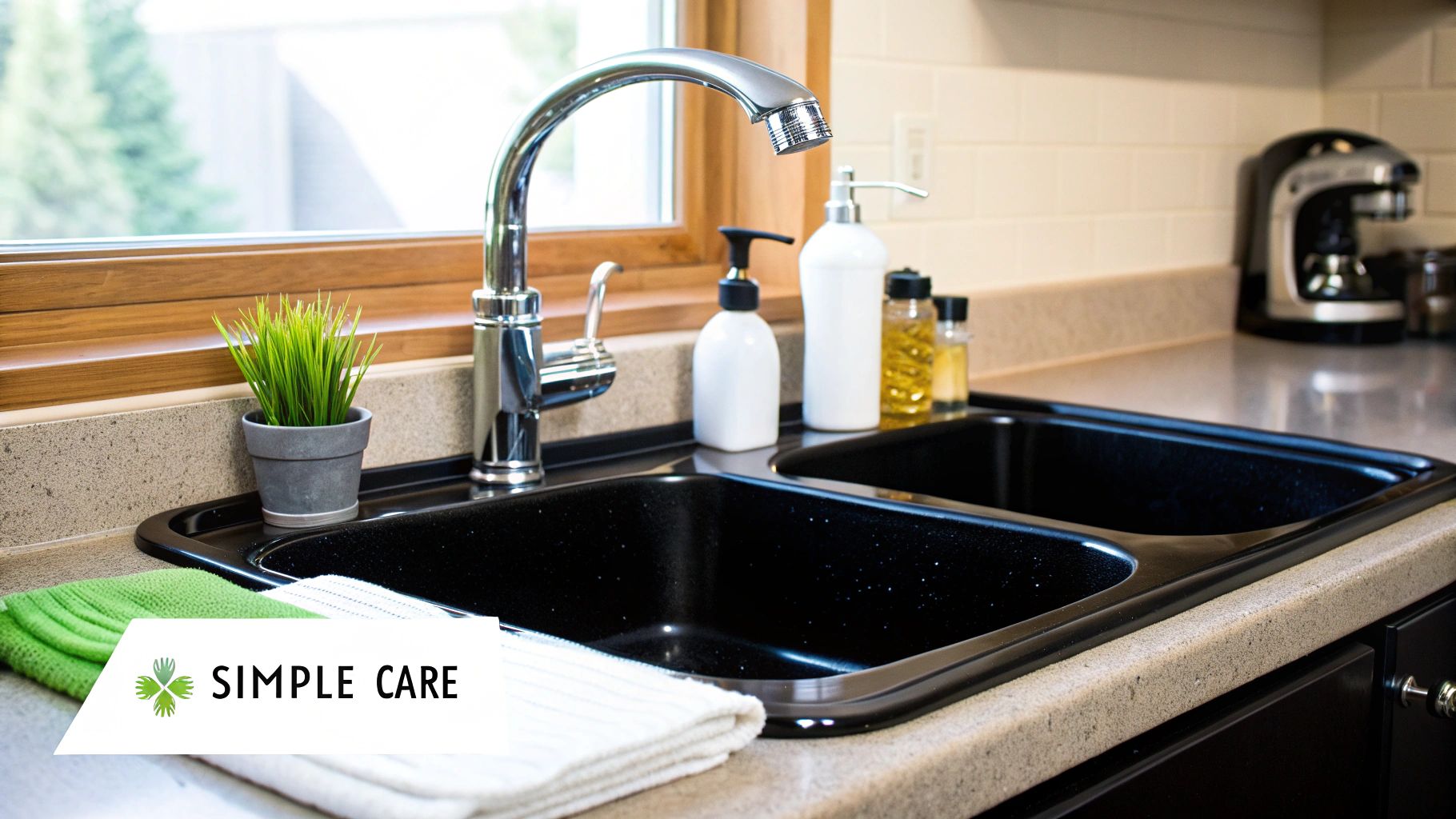
That dream kitchen faucet can quickly become a nightmare if it doesn’t fit your sink. This crucial installation aspect is often overlooked in the excitement of choosing the perfect style. Understanding the realities of installation can save you time, money, and frustration.
Measuring Twice, Buying Once: Essential Pre-Purchase Steps
Before falling in love with a faucet, assess your current setup. This involves careful measurements and an understanding of your plumbing. Mounting hole patterns vary, and the wrong configuration can mean costly modifications. Clearance requirements between the faucet and the backsplash are also crucial.
Consider the available space for comfortable use. A beautiful faucet is useless if it doesn’t allow enough room to operate effectively. Taking the time to plan ahead will ensure a smoother installation process.
Decoding the Mysteries of Mounting Holes
Most sinks have pre-drilled holes for faucet installation. These holes typically come in single-hole, centerset (4″), and widespread (8″-16″) configurations. Choosing a faucet that aligns with your sink’s existing holes simplifies installation, often avoiding extra plumbing work and potential complications. This compatibility check is essential for a hassle-free experience.
Plumbing Compatibility: Avoiding Hidden Surprises
Evaluating your existing plumbing is as important as measuring your sink. The size and location of your water supply lines must be compatible with the chosen faucet. If opting for a faucet with a separate sprayer, ensure your plumbing can accommodate it. Even seemingly simple installations can present challenges. You might find the following resource helpful: How to master your plumbing.
Real-World Installation Stories: Lessons Learned
Many homeowners encounter unexpected installation issues. A common problem is discovering the chosen faucet is too tall for the space between the sink and overhead cabinets. Incompatible connections between the faucet and water supply lines are another frequent issue. These problems can delay your project and add unexpected expenses.
Making Your Decision: A Proven Process for Faucet Selection
Choosing the right kitchen faucet can feel like navigating a maze of options. However, a structured approach can simplify the process, leading you to the perfect fixture that complements your kitchen’s design and enhances your daily cooking routine. This guide outlines a proven process to help you avoid buyer’s remorse and select a faucet that truly meets your needs.
Showroom Strategies: Beyond the Surface
Visiting a showroom offers a valuable opportunity to experience faucets firsthand. Don’t just rely on appearances; engage all your senses. Feel the weight and finish of the faucet. Operate the handles to test their smoothness and responsiveness. Try the spray functions and ensure the sprayer docks securely. These hands-on interactions provide crucial insights into the faucet’s quality and ergonomics.
Researching Reliability: Beyond Manufacturer Claims
While manufacturer information is a good starting point, independent reviews and testimonials offer valuable real-world perspectives. Explore online forums and consumer review sites like Consumer Reports for insights into long-term performance. Pay attention to comments about durability, ease of maintenance, and customer service experiences. This additional research offers a more comprehensive understanding of a faucet’s potential strengths and weaknesses.
Timing Your Purchase: Aligning with Renovation Cycles
If your faucet purchase is part of a larger kitchen renovation, consider the project timeline. Ordering too early can create storage issues, while waiting until the last minute can cause delays. Coordinate your faucet purchase with other project elements for a smooth, efficient renovation.
Designer Insights: Asking the Right Questions
Professional kitchen designers consider several key factors when recommending a faucet. They evaluate the client’s cooking habits, design preferences, and budget. Ask yourself similar questions: How often do you fill large pots? Do you prefer a modern or traditional aesthetic? What’s your budget? These answers will guide you toward the right faucet for your kitchen.
Prioritizing Features: Matching Needs to Functionality
Not all faucet features are created equal. Prioritize those that align with your specific needs. A touchless faucet from a reputable brand like Moen might be ideal for households with young children. A pull-down faucet with multiple spray functions could be essential for passionate cooks. This focused approach ensures you invest in features that genuinely enhance your kitchen experience.
Warranty Wisdom: Decoding the Fine Print
A warranty offers valuable protection, but understanding its terms is crucial. Examine the coverage period and included components. Some warranties cover the entire faucet for a limited time, while others offer lifetime coverage on specific parts. Knowing the details empowers you to make an informed decision.
Pre-Purchase Checklist: Ensuring Compatibility and Satisfaction
Before finalizing your purchase, review this checklist:
- Sink Compatibility: Verify that the faucet’s mounting style is compatible with your sink’s configuration.
- Water Pressure: Confirm your home’s water pressure meets the faucet’s requirements.
- Installation Complexity: Evaluate the installation process and decide if professional help is necessary.
- Budget: Ensure the faucet aligns with your overall budget.
By following this process, choosing a kitchen faucet becomes a manageable and rewarding experience, leading you to the perfect fixture for your kitchen.
Ready to transform your kitchen with the perfect faucet? Explore the exquisite collection of Cranach bath and kitchen faucets designed to elevate your style and enhance functionality. Visit Cranach Home and discover the perfect centerpiece for your kitchen.

